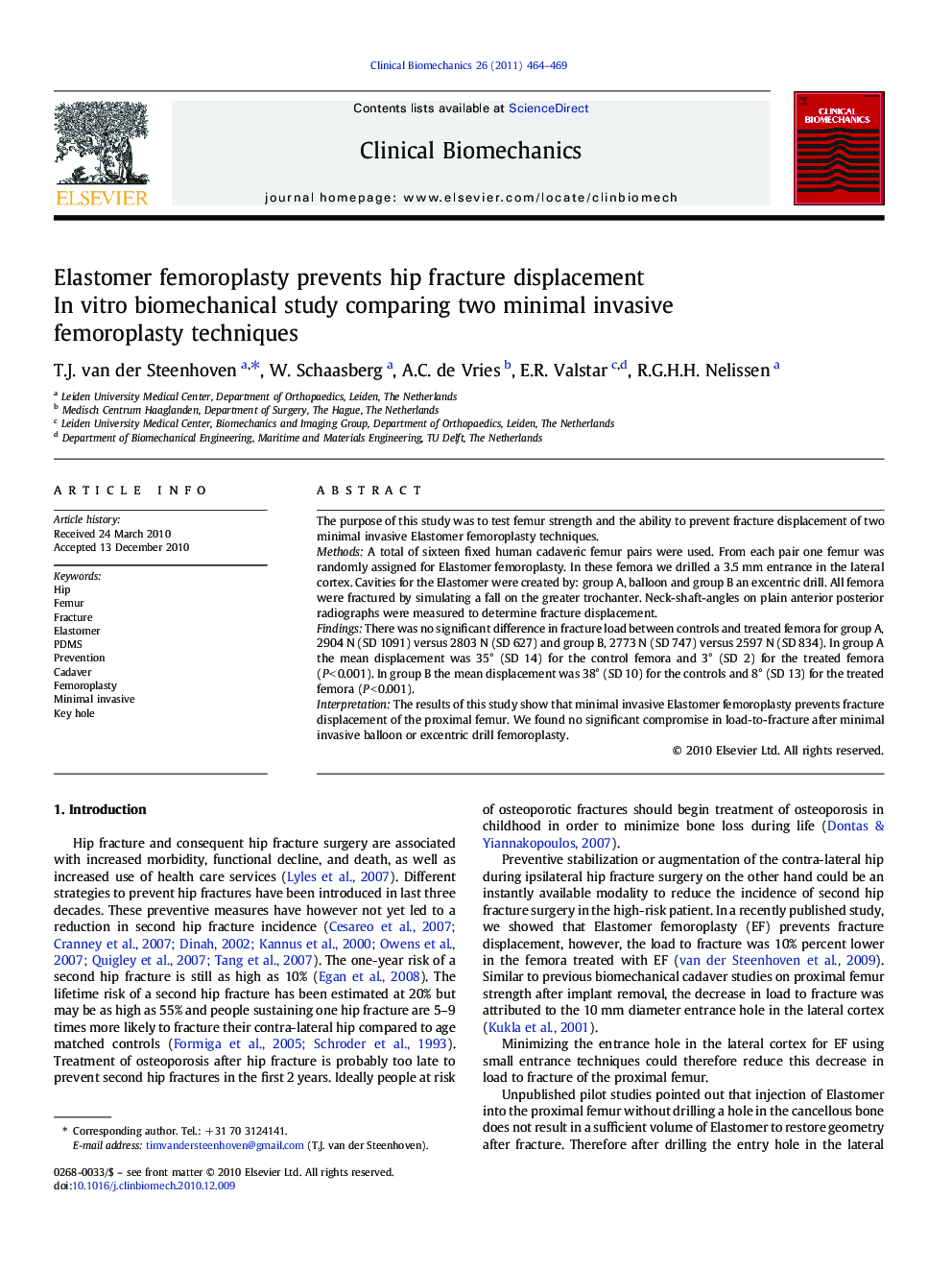| Article ID | Journal | Published Year | Pages | File Type |
|---|---|---|---|---|
| 6205082 | Clinical Biomechanics | 2011 | 6 Pages |
The purpose of this study was to test femur strength and the ability to prevent fracture displacement of two minimal invasive Elastomer femoroplasty techniques.MethodsA total of sixteen fixed human cadaveric femur pairs were used. From each pair one femur was randomly assigned for Elastomer femoroplasty. In these femora we drilled a 3.5 mm entrance in the lateral cortex. Cavities for the Elastomer were created by: group A, balloon and group B an excentric drill. All femora were fractured by simulating a fall on the greater trochanter. Neck-shaft-angles on plain anterior posterior radiographs were measured to determine fracture displacement.FindingsThere was no significant difference in fracture load between controls and treated femora for group A, 2904 N (SD 1091) versus 2803 N (SD 627) and group B, 2773 N (SD 747) versus 2597 N (SD 834). In group A the mean displacement was 35° (SD 14) for the control femora and 3° (SD 2) for the treated femora (P < 0.001). In group B the mean displacement was 38° (SD 10) for the controls and 8° (SD 13) for the treated femora (P < 0.001).InterpretationThe results of this study show that minimal invasive Elastomer femoroplasty prevents fracture displacement of the proximal femur. We found no significant compromise in load-to-fracture after minimal invasive balloon or excentric drill femoroplasty.
